This is one in a series of posts on the Fujifilm GFX 100S. You should be able to find all the posts about that camera in the Category List on the right sidebar, below the Articles widget. There’s a drop-down menu there that you can use to get to all the posts in this series; just look for “GFX 100S”. Since it’s more about the lenses than the camera, I’m also tagging it with the other Fuji GFX tags.
There is a body of opinion that somehow depth of field (DOF) calculators don’t work for GFX cameras. The proponents of that school of thought say that it’s not just a matter of picking the appropriate circle of confusion (CoC) diameter; it’s more fundamental than that. Some of them cite publications by Zeiss that say that the lens aberrations affect the DOF performance of the lens, which is undeniably true, but may or may not be applicable in the case of the GF lenses, which are with some exceptions fairly well corrected.
My current lens-testing protocol provides a means to measure the actual circles of confusion produced by the GF lenses on the GFX 100S as the subject is defocused, which allows the actual DOF to be compared to the DOF predicted by geometric optics, upon which depth of field calculators are based.
For the plots to follow, I’ve used the white-balanced raw channels as computer fodder, and used a threshold to define blur circle size that is fairly pessimistic. I take the intensity at the center of the blur circle, and define the radius of the blur circle as the distance between the center and that point where the intensity drops to one tenth of the value at the center. The blur circle data plotted above that MTF Mapper covers both sides of the line spread function or PSF, and I’m computing the radius of the blur circle both ways, averaging those two numbers, and doubling it to get the diameter of the blur circle. That gives me the red curves in the plots below. The blue curves are what geometric optics says should be the case for an ideal lens with no diffraction.
Blur circles are larger than predicted by geometric optics near the plane of focus, as expected. Blur circles are slightly smaller than predicted some distance away from the focal plane.
Similar, but not identical effects with the other orientation of the edge.
Relationship of predicted and measured performance doesn’t change much as you stop down.
No surprises here.
I’ll only look at the 60 mm and 100 mm focal length results wide open, where you’d expect the most departure from the predicted performance.
Now we see quite a bit of difference between the tangential and radial edges.
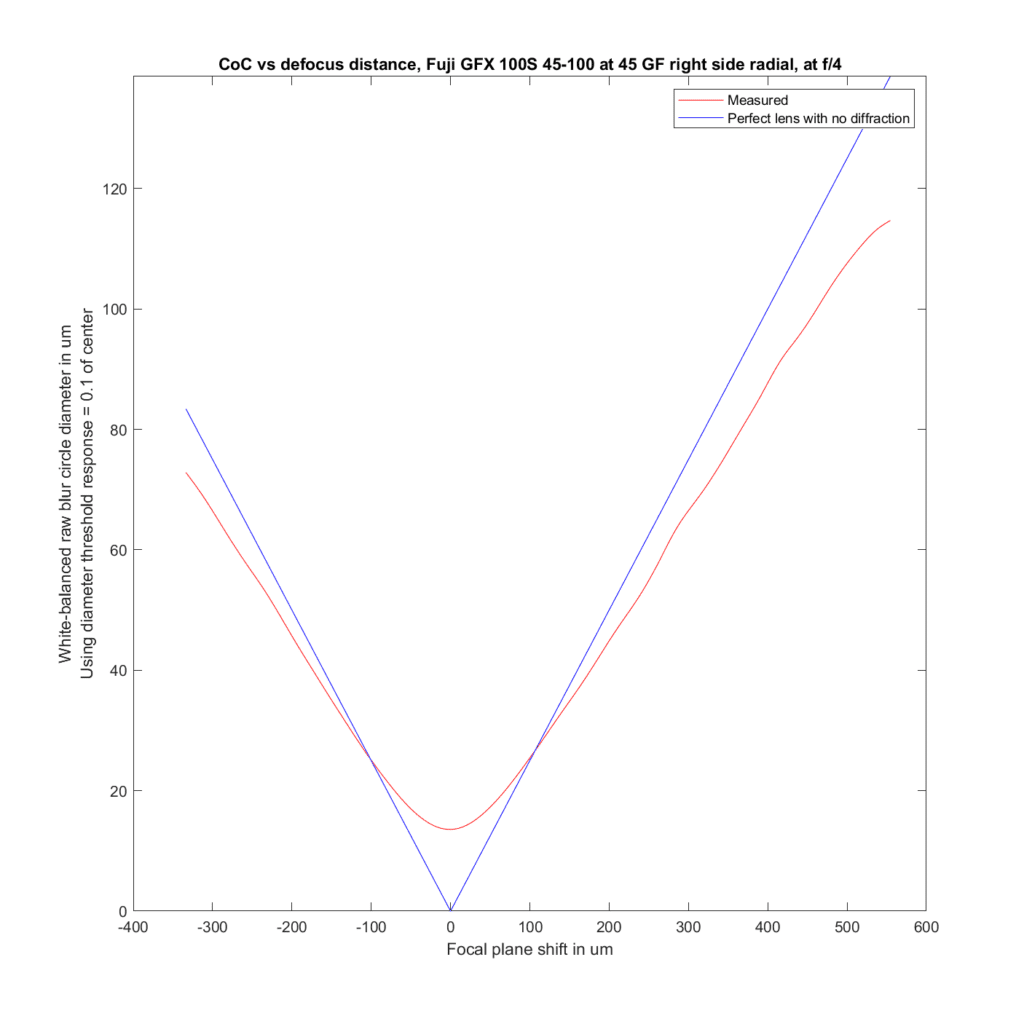
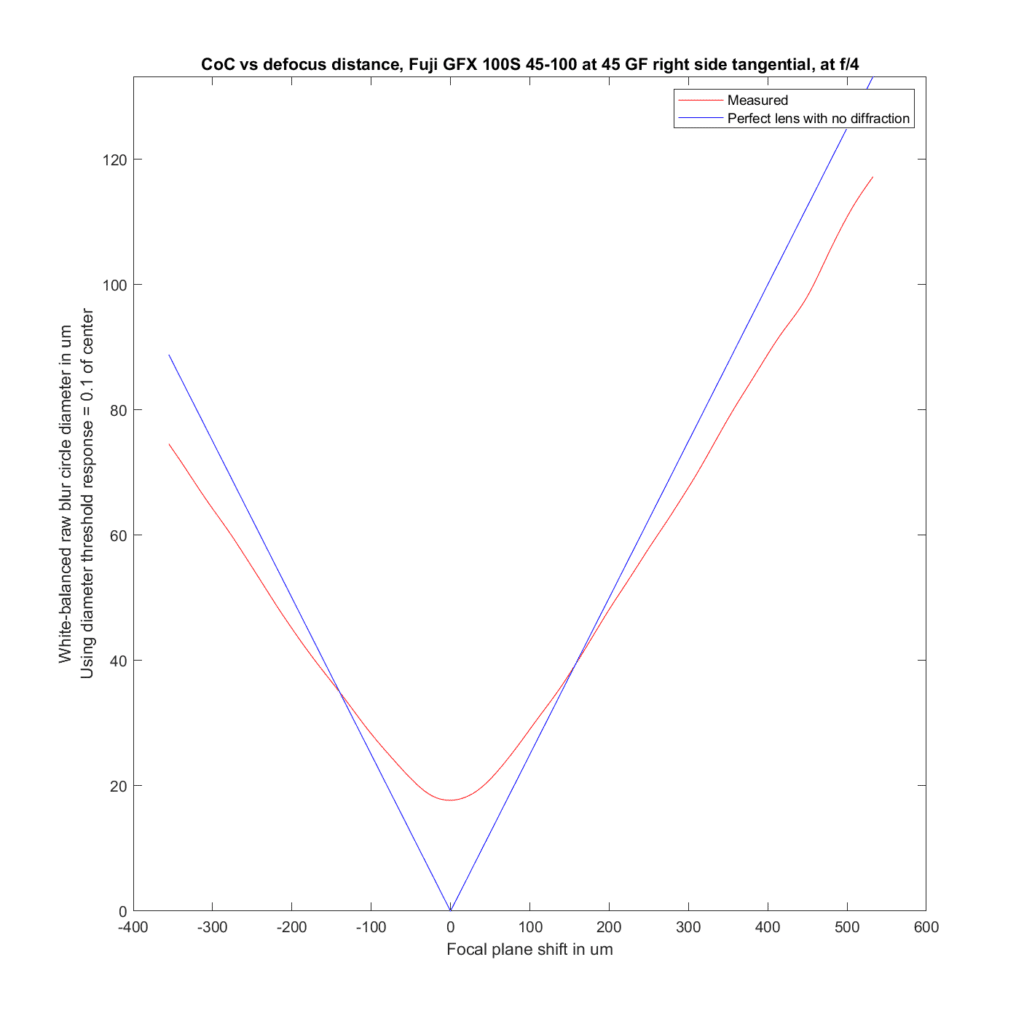
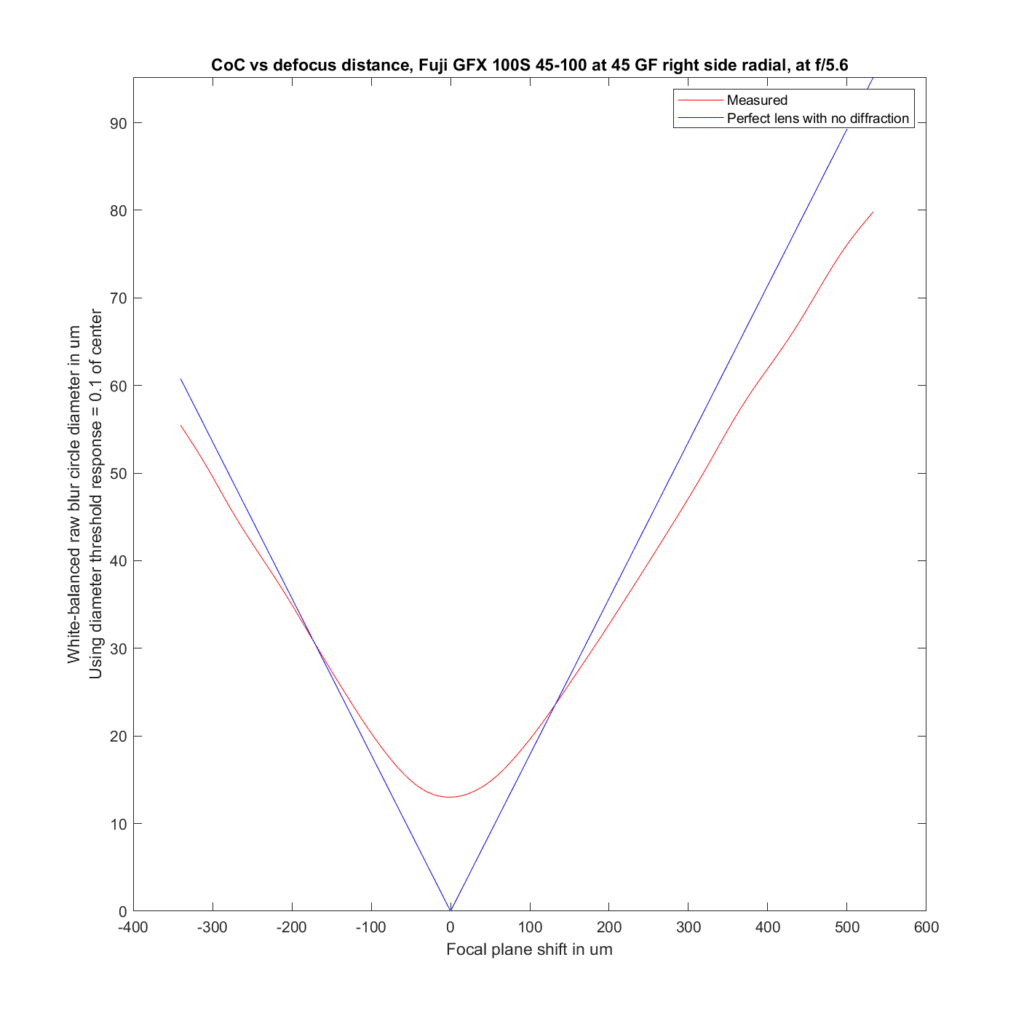
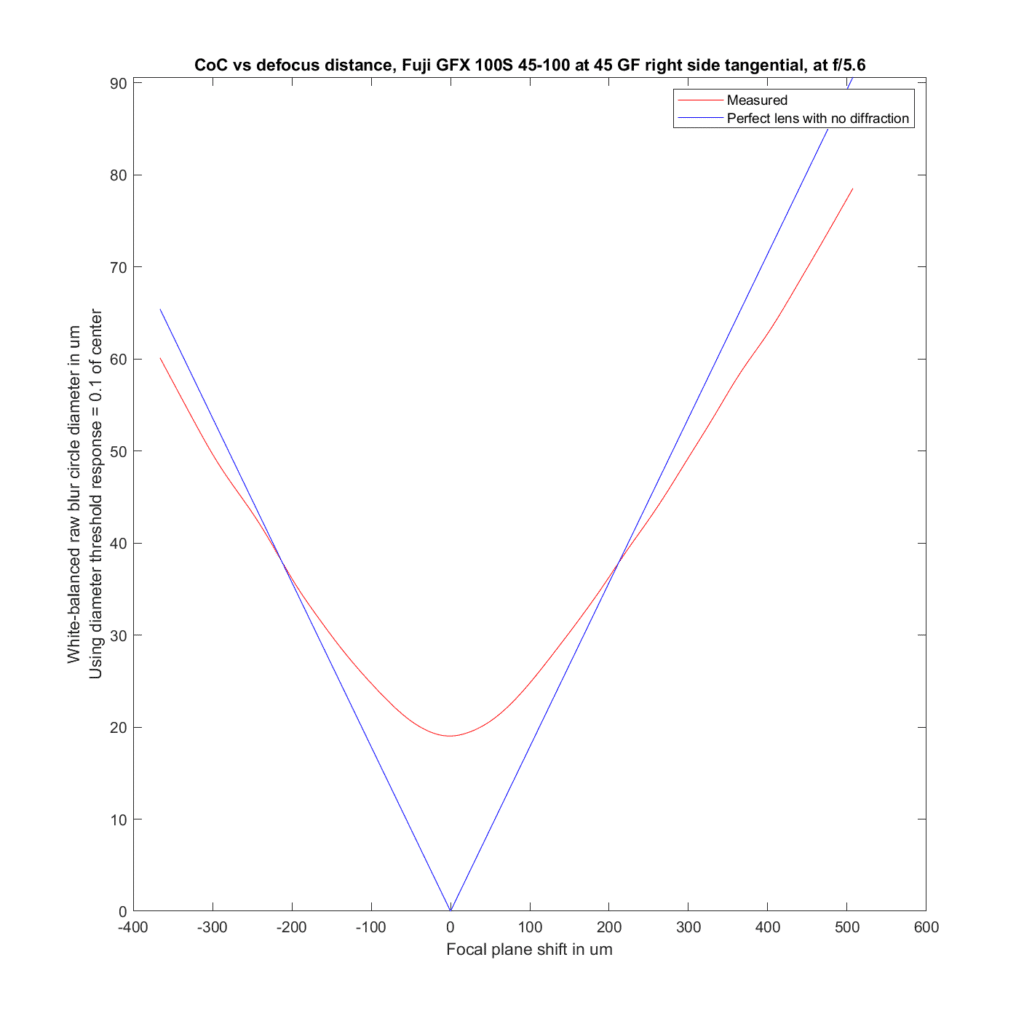
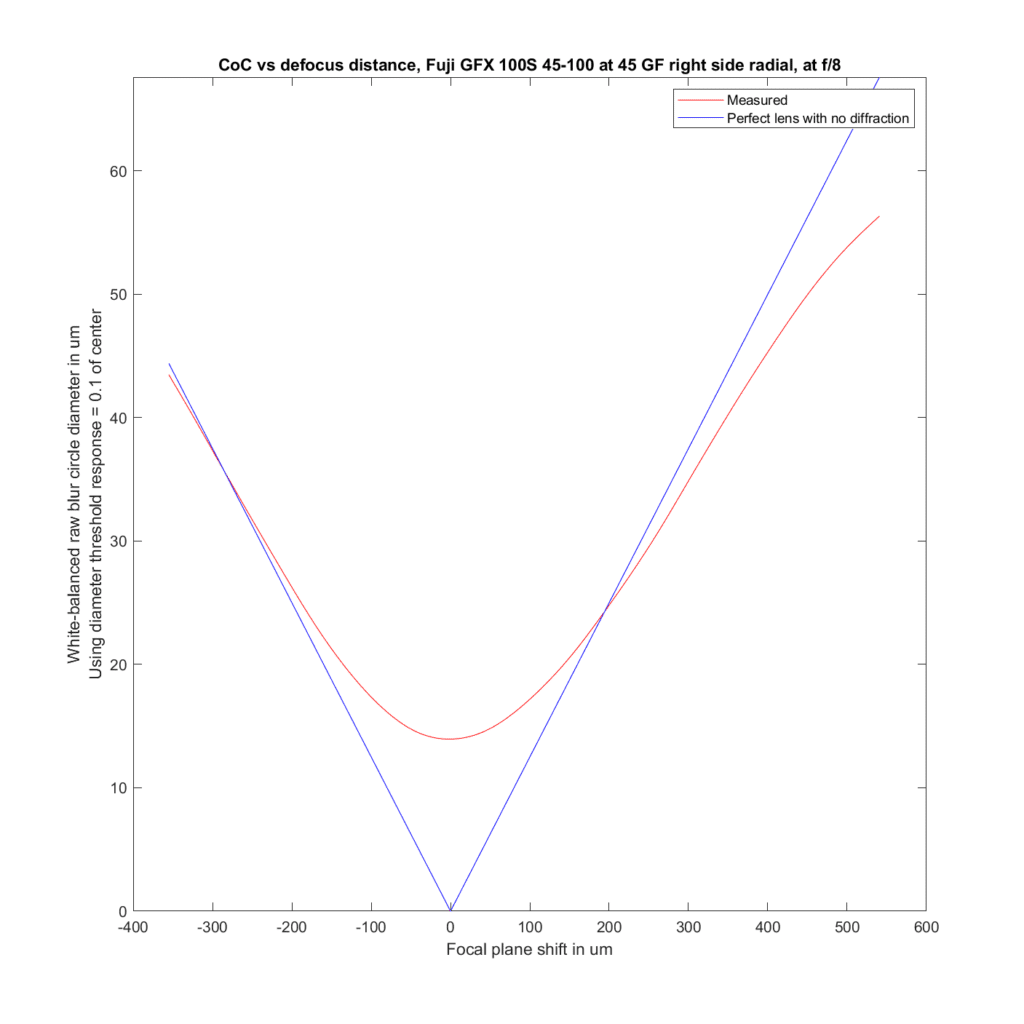
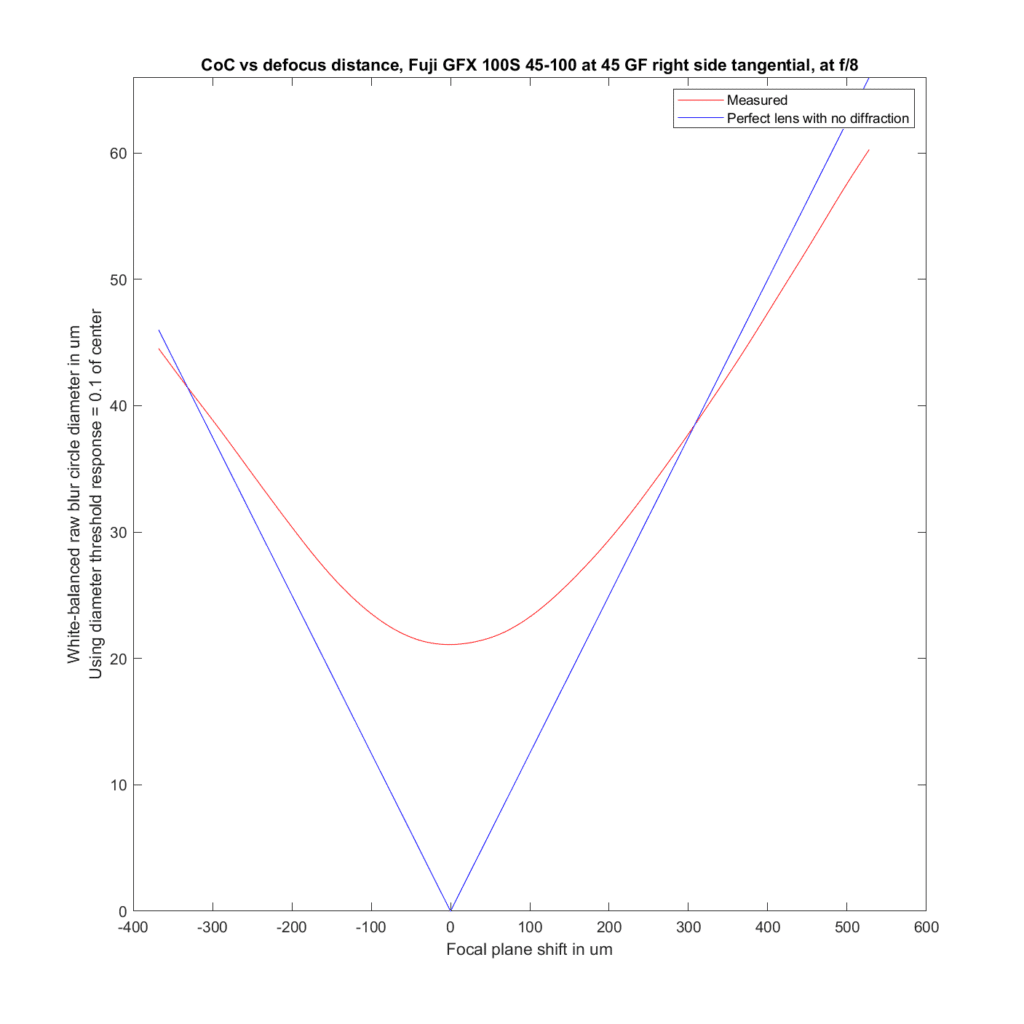
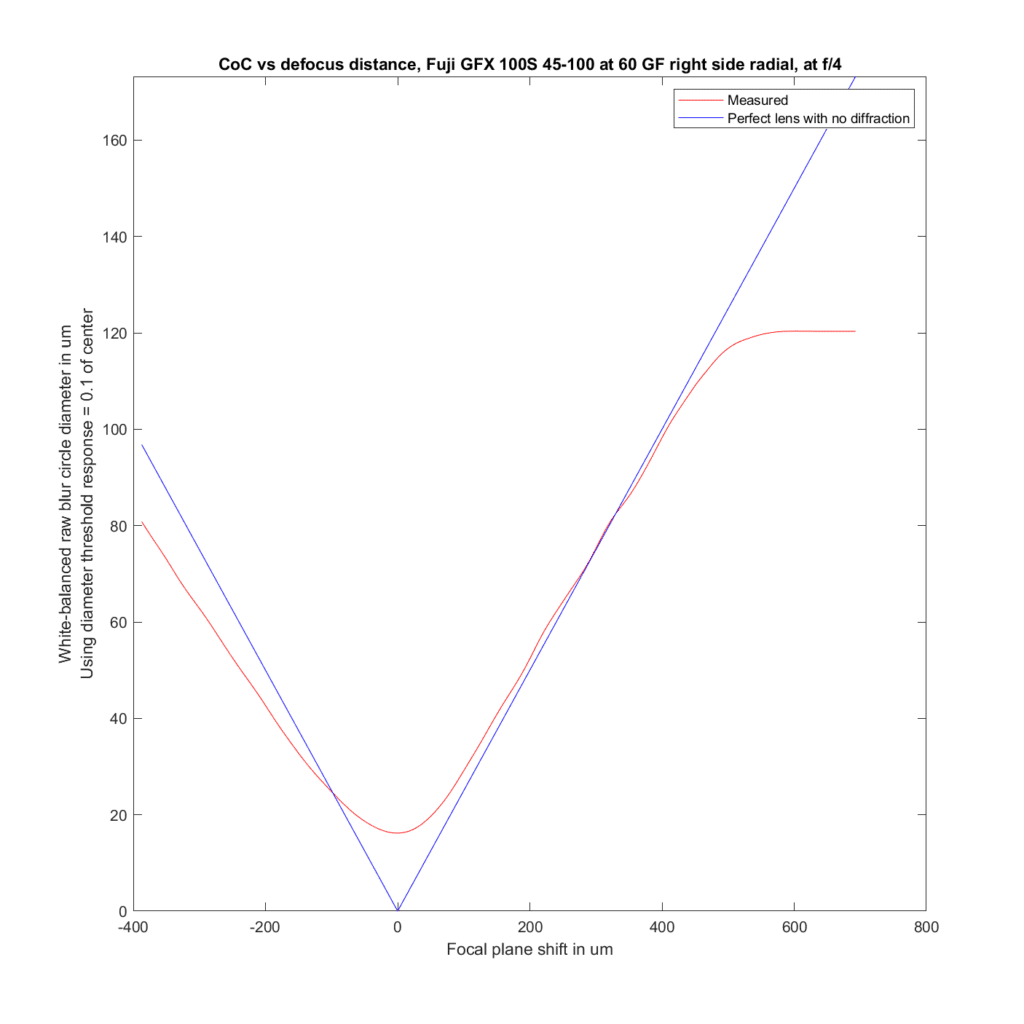
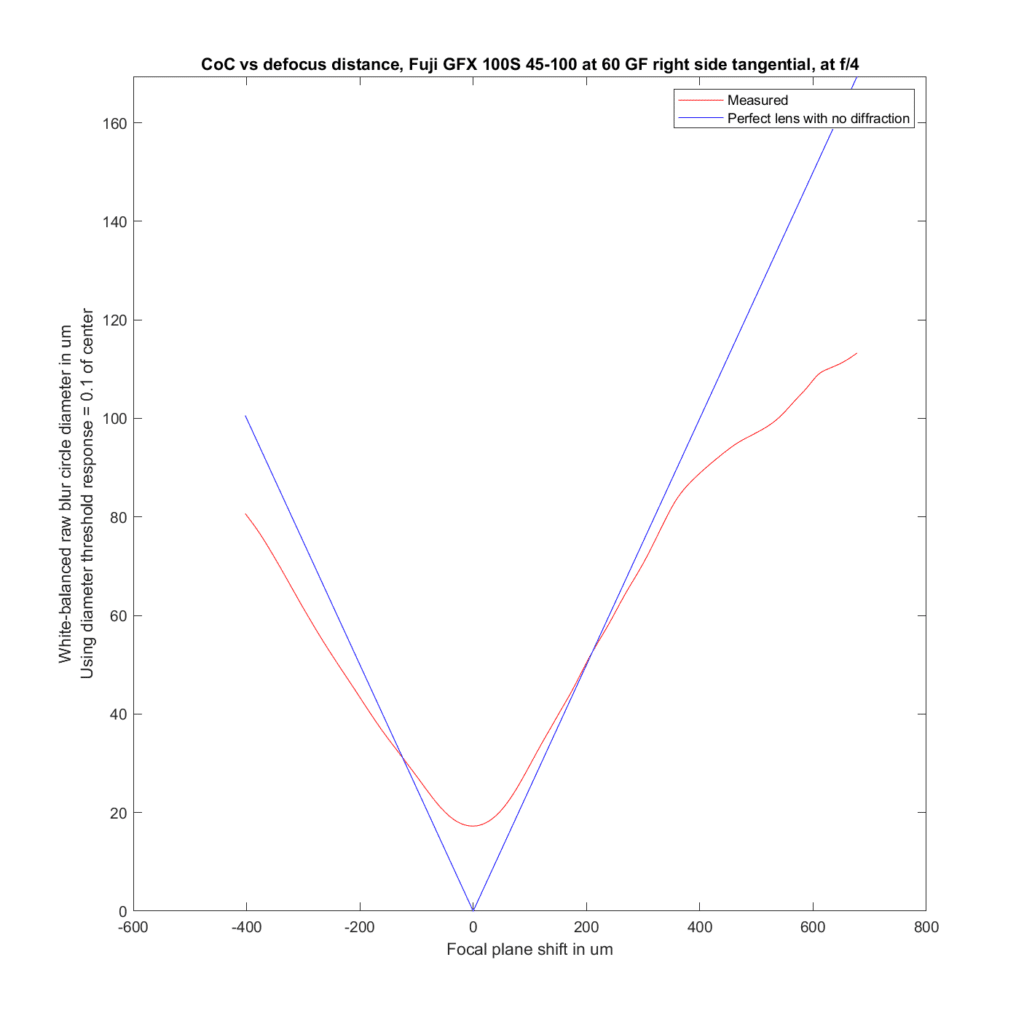
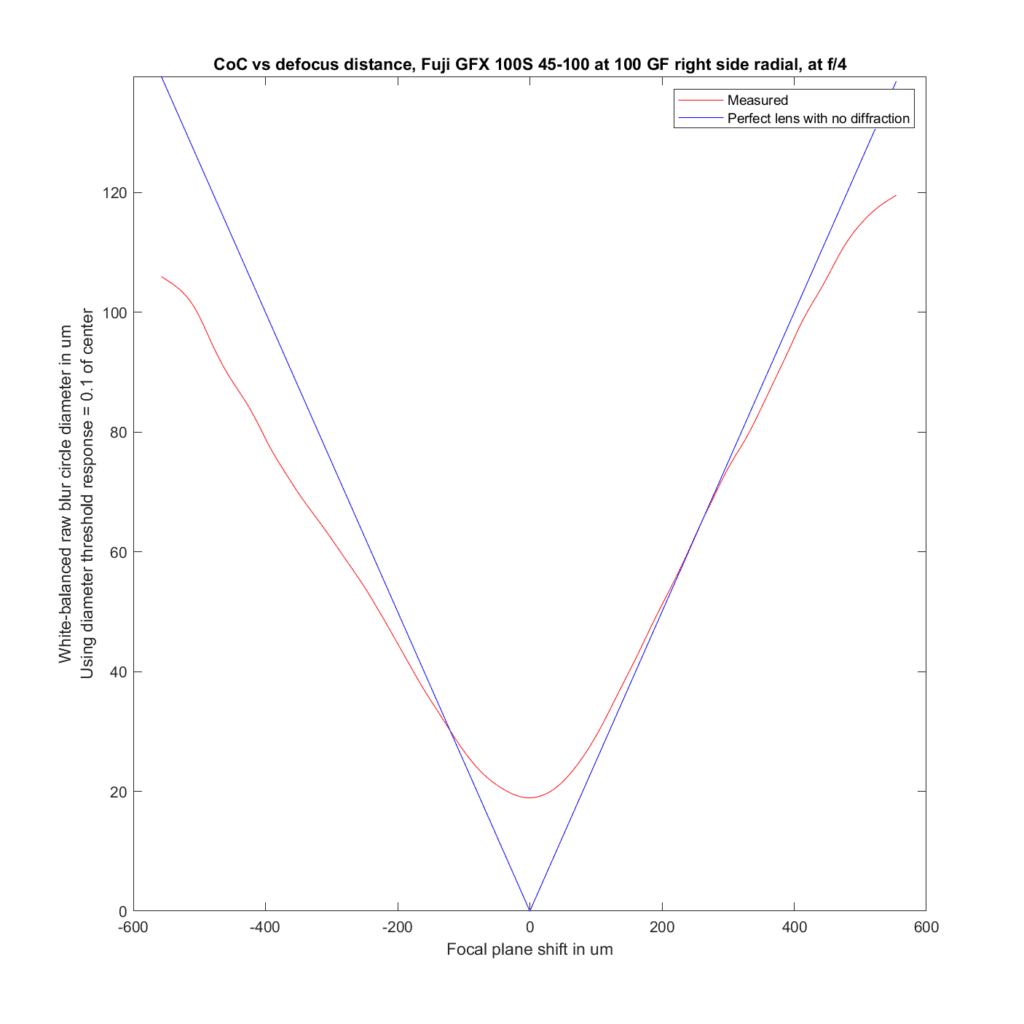
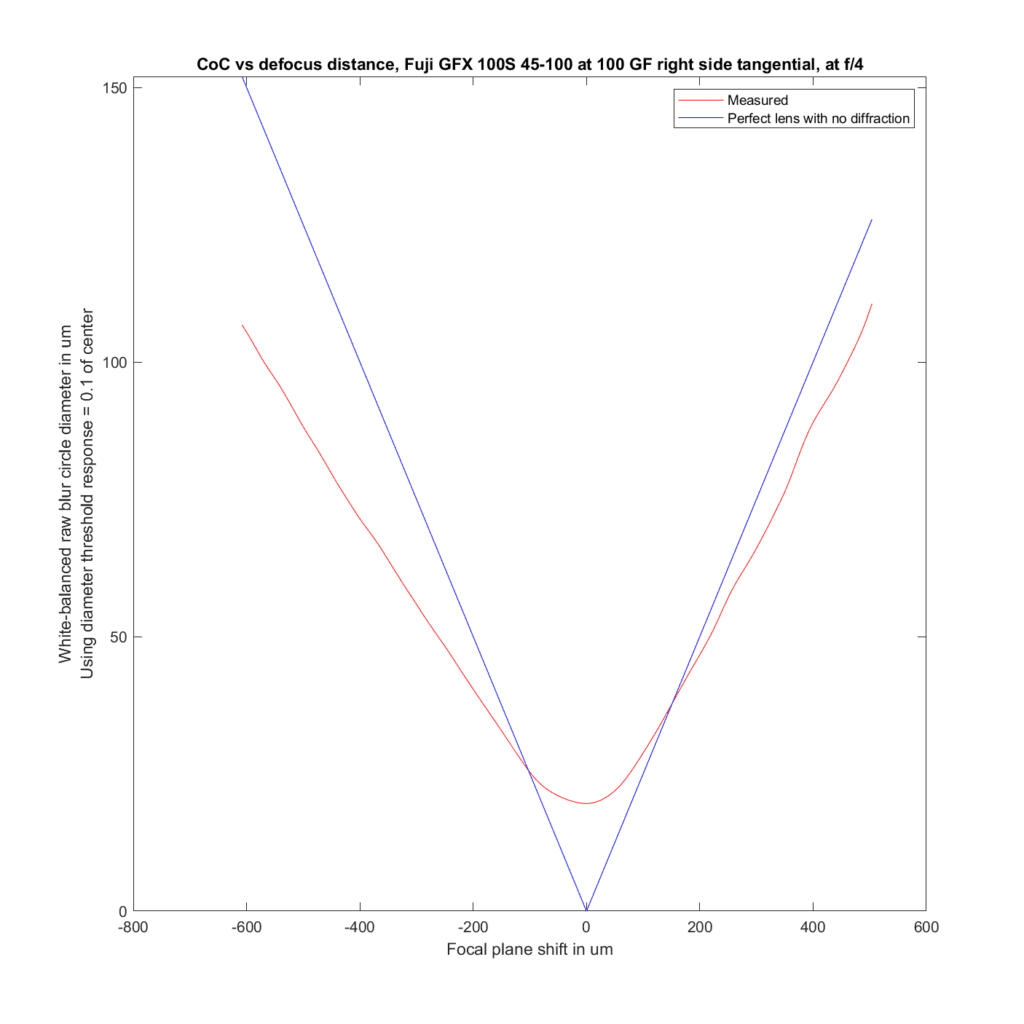
Leave a Reply